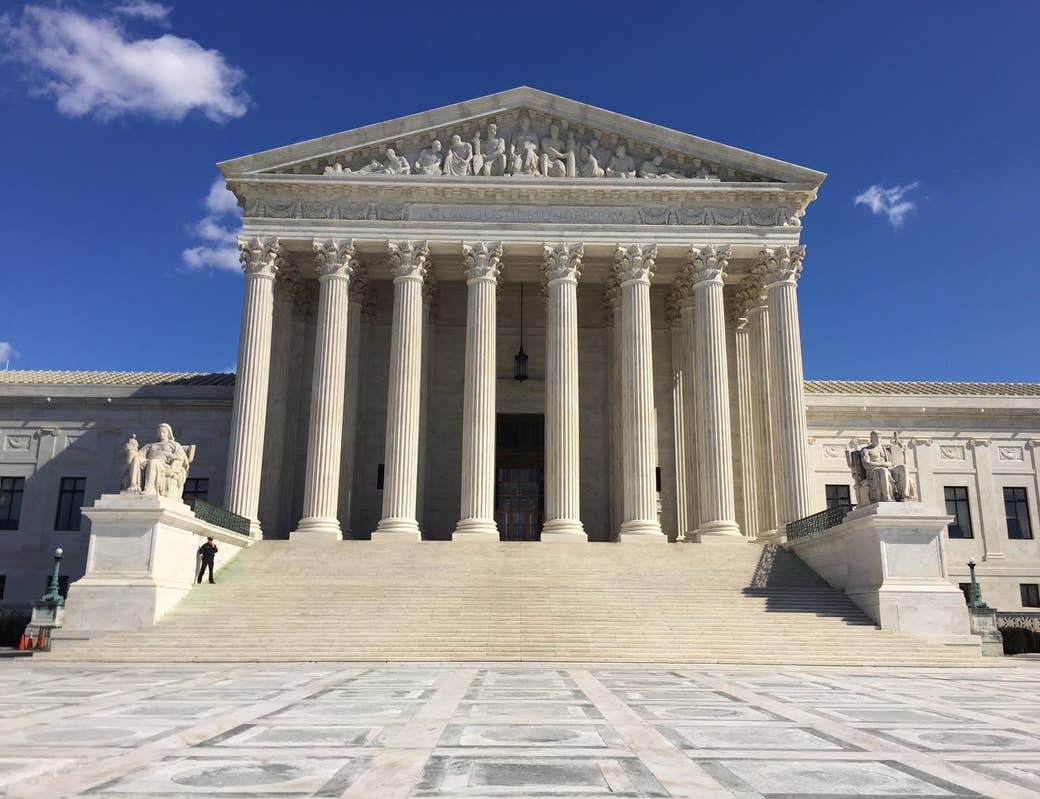
WASHINGTON — The vacancy at the Supreme Court in the wake of Antonin Scalia's death and the subsequent standoff between the executive and legislative branch over President Obama's coming nominee have created an unusual reality: gridlock at the high court.
While gridlock in Congress and gridlock between the Republican lawmakers and Democratic administration are not new, the country is now seeing the first signs of an unusual slowdown within the judicial branch as the justices find their way around a court without Scalia — and without a replacement.
In short: With the court in flux, the justices are left in waiting.
The first sign of this was several things that didn't happen. The court, after a month without holding a private conference (one set for Feb. 19 was canceled after Scalia's death), held a conference on Feb. 26 to consider the many petitions awaiting action from the justices.
When the orders of the court came down Monday morning, however, the court granted no new cases. The court also took no action on several petitions that have been pending for some time relating to juvenile life without parole sentences; many had expected the justices to send the cases back down to lower courts for reconsideration in light of a January 25 decision on the topic. Finally, the court also took no action in V.L. v. E.L., a petition that's been pending before the court since November 2015 over Alabama's treatment of a same-sex couple's adoptions in Georgia.
On Tuesday, the Supreme Court issued its first opinions since Scalia's death. Similar to the Monday orders, however, the most notable development was what was missing: any close cases. The court only issued two decisions, and both were 6-2 decisions in which Scalia's vote would not have made a difference in the outcome of the case. The court took no action in any of the closely watched cases in which Scalia's vote could have made a difference — including the case over public union fees, cases over voting rights, and a case over a university's affirmative action policy.
While none of those developments, independently, would have been notable beyond the case or cases themselves, the combination signaled a court still figuring out what has changed — and what to do now.
Individual justices also are considering what Scalia's absence has changed. For the first time since Feb. 22, 2006, Justice Clarence Thomas asked a question at oral arguments on Monday. Of course, it was bound to happen eventually (probably). But, the moment and the topic — the Second Amendment right, as interpreted by Scalia in the court's 5-4 decision in District of Columbia v. Heller, of an individual to bear arms — signaled that this might be a changed world for Thomas.
While Thomas has dismissed the importance of the court's oral arguments in the past, he now is a justice at arguments without his much louder fellow-traveler. Scalia loved oral arguments because they gave him a chance to spar with lawyers before the court — and with his colleagues. Without Scalia to raise Heller, though, it fell to Thomas to step in during the last moments of the government lawyer's arguments and raise the question that Scalia might have raised three weeks earlier.
Thomas went further, though, suggesting the extent to which the court itself also is in flux. Discussing a law that results in a lifetime ban on possessing a gun, Thomas noted that gun possession, "at least as of now, is still a constitutional right."
That, of course, is the bottom line: There is now a vacancy on the court, and the justices don't know who will be taking that seat — or when. The politics of the presidential race and Senate races already have been superimposed on the vacancy, with no apparent end in sight. Depending on who takes the seat, the Supreme Court's balance of power could change dramatically.
Because of the lag between agreeing to hear a case, holding arguments in a case, and deciding a case, moreover, it's totally understandable that the eight remaining justices are cautious about providing one of the four votes required to hear new cases. They have no clue who (or if anyone) new will be on the court when they actually hear the case.
This is particularly notable for Chief Justice John Roberts, who unexpectedly and immediately has found himself with a split 4-4 court, at best, for most conservative causes. In those fields where Justice Anthony Kennedy has sided with the more liberal justices, Roberts is now a minority chief — and that's before a new justice joins the court.
The question of who that new justice might be is more than just politics or even broad legal ideology, though. The addition of a new ninth voice to the court inevitably will change the dynamic of what cases the justices will want to take up, how those cases are most likely to be resolved, and what reasoning might be most likely to figure into that resolution.
It's highly unlikely, however, that a new justice will be joining the court anytime soon. As such and as the year moves on, the eight justices will adapt. Decisions, at least stopgap ones, will be made in close cases: limited, technical rulings that avoid larger constitutional decisions; 4-4 rulings that let lower court decisions stand but set no national rule; and calls for re-argument, literally kicking the can down the road.
The decisions will, almost out of necessity, be more tentative than one expects from the Supreme Court.
This is what gridlock looks like at the Supreme Court.
